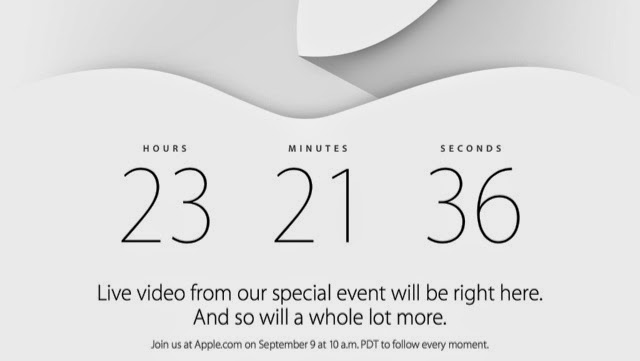
It’s like Christmas Eve for Apple fans: Tomorrow, the company is expected to unleash its biggest product launch of the year. What will we see at the big event? Apple hasn’t been shy about stoking the fires for its Tuesday event in Cupertino, which will likely see the introduction of the iWatch and the iPhone 6. In many ways, it’s a new chapter for Apple.
Despite the hype that always accompanies the staging of an Apple event, only a handful of them over the past decade have truly mattered. It seems pretty clear that next Tuesday’s event is going to fall into that category, based on the way Apple has handled the run-up to it and the fact that we’re about to enter a new era for the storied company.
You can count those ground-breaking events from the last ten years on one hand: the 2005 iPod nano event, the 2007 Macworld that introduced the iPhone, the 2008 event that revealed how the App Store would work, and the 2010 iPad event. Sure, there were other notable moments during that period (and plenty before then) but those were the events that truly made people realize how Apple was defining the current generation of personal computing.
Something to talk about
It looks as if the new product category that Apple watchers have been clamoring for since Tim Cook became CEO in 2011 is here, in the form of what we’ll call the iWatch. We don’t know what it looks like or exactly how it will work, but we know that it will pair with the iPhone and we know that it will serve as a landmark product for those who have wondered if Apple could sustain its amazing run of innovation as we approach the third anniversary of Jobs’ death.
iWatch,

At the event. Most of the chatter on the web reveals that the iWatch won’t be only about health and fitness, but also about good looks, aesthetics and luxury. In fact, Apple is believed to invited top fashion editors and bloggers in unprecedented numbers to its launch gala.
Apple’s first wearable gadget could beam messages,
Facebook updates, simplified apps and Siri to our wrists, eliminating the all-too-common need to take out our devices to constantly check notifications.
It’s going to become especially convenient to pocket the all-but-confirmed 4.7-inch and even bigger 5.5-inch iPhone 6 in your jeans, and always stow the next 9.7-inch
iPad Air 2 in a bag later this year. At the same time, iWatch leaks have pointed to
Nike FuelBand SE-inspired fitness tracking and biometric sensors. Apple could possibly take more cues from the sneaker maker instead of its smartwatches rivals.
iPhone
Though Apple is planning to unveil two iPhones tomorrow, in 4.7 and 5.5-inch varieties, there’s been surprisingly little information on what the two devices might be called. According to a new report from Mac Otakara [Google Translate], Apple will refer to the smaller 4.7-inch iPhone as the “iPhone 6,” while the larger 5.5-inch version will be called the “iPhone 6 Plus.”
It is unknown what source Mac Otakara derived its information from, but the site has provided accurate predictions in the past. MacRumors has also heard the iPhone 6 and iPhone 6 Plus monikers from a second source, but it remains unclear if that is indeed Apple’s naming plan.
Tuesday’s event will be one of those crossroads events: one that we’ll remember either as a day Apple articulated a new vision for computing that we’ve been waiting for someone to advance — or as a sign it has overreached.
Here is a great articles to read.
The post-Steve Jobs era of Apple will officially begin on Tuesday. Here’s why.
Apple iWatch launch tomorrow: Everything we know so far.
Apple’s Larger Phones May Be Called iPhone 6, iPhone 6 Plus
 Sunday clears away the rust of the whole week.”
Sunday clears away the rust of the whole week.”






